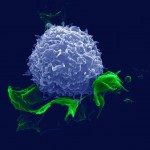Lien vers Pubmed [PMID] – 25174659
Med Mal Infect 2014 Oct;44(10):449-54
The treatment of hepatitis C virus (HCV) infection has significantly improved in the last 2 decades. The association of pegylated interferon alfa and ribavirin (PR) has allowed a sustained virologic response (SVR) for nearly 15 years i.e. a viral cure of the infection for 45% of genotype 1-, 65% of genotype 4-, 70% of genotype 3- and around 85% of genotype 2-infected patients. A better understanding of the HCV life cycle has led to the development of direct-acting antiviral drugs (DAAs) targeted against viral proteins (NS3/4A protease, NS5B polymerase with nucleotide and non-nucleotide inhibitors, NS5A viral replication complex). The combination of first-generation protease inhibitors with PR demonstrated a high antiviral effectiveness (75% of SVR but restricted to genotypes 1) with substantial adverse effects for the first-generation protease inhibitors, which obtained market approval in 2011 (telaprevir and boceprevir), recommendations for use in HCV monoinfected patients in 2012, and in HCV/HIV coinfected in 2013. Then, the combination of second-generation protease inhibitors with PR increased SVR rates from 75 to 90%, while reducing treatment duration, adverse effects, and the number of pills. The next step will be using an interferon and ribavirin-free combination of DAAs; it should become the standard of care in 2015. These excellent results in “easy-to-treat” patients and in small populations in the first studies were confirmed in phase III studies and in “difficult-to-treat” patients (treatment– especially protease inhibitors–previously treated patients, cirrhotic patients, liver and renal transplant patients, HIV coinfected patients, and multi-drug treated patients, at increased risk of drug interaction). The high antiviral potency of these new combinations has changed the definition of “difficult-to-treat patients”. These unique achievements in drug history make any previous publication on hepatitis C treatment obsolete.

